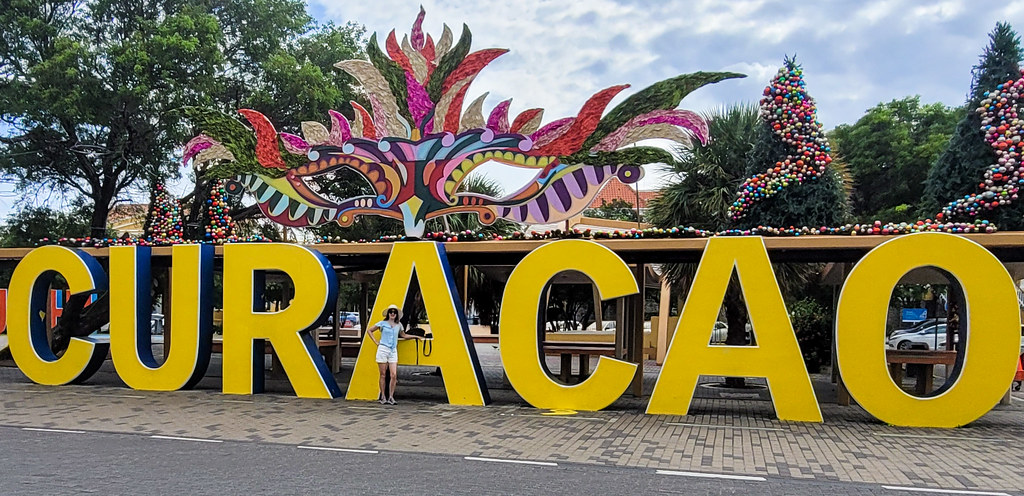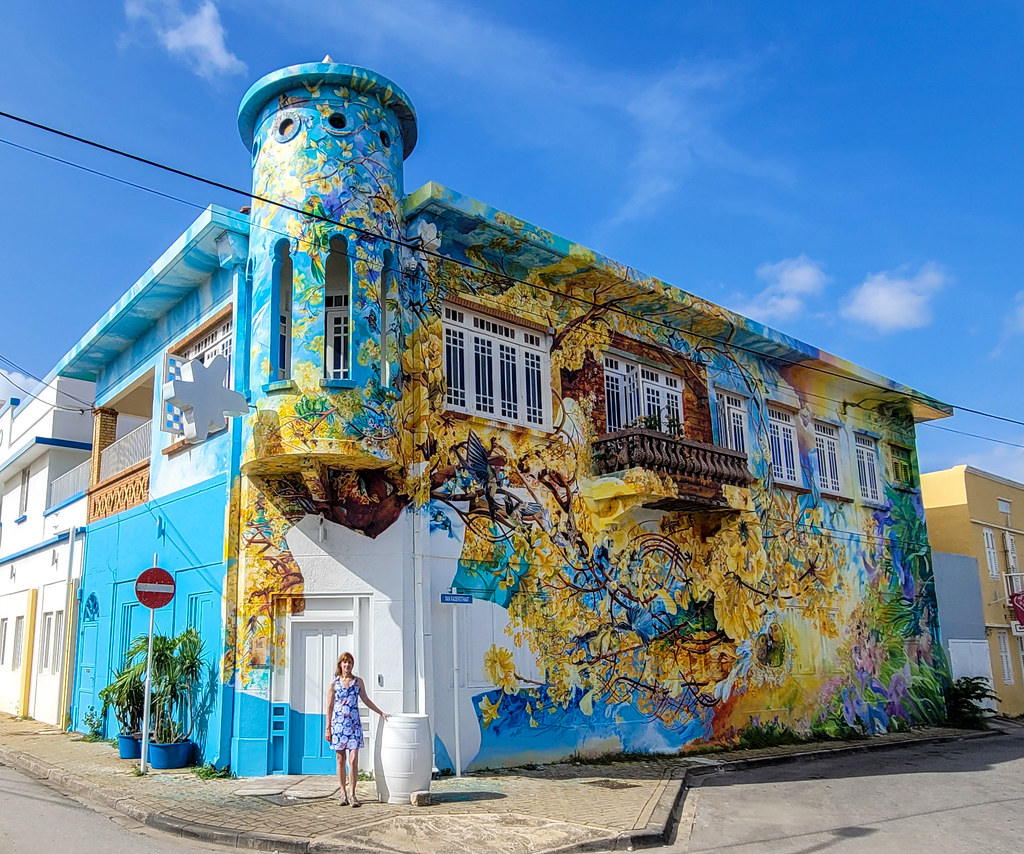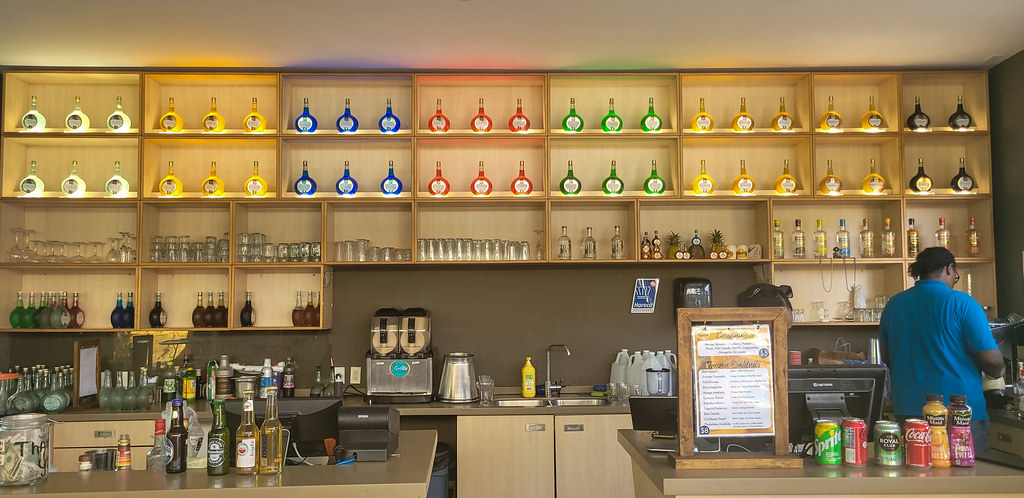
Willemstad Curacao Attractions – Top 17 Things to Do
Willemstad is the picturesque capital of Curacao and full of colorful wonders. Even more this Dutch Caribbean port is a UNESCO World Heritage Site with many historic landmarks. I visited numerous times as an Acupuncturist-at-Sea and love sharing my adventures. So, read on to learn about the top 16 Willemstad Curacao attractions for your next vacation.
About Willemstad, Curacao
Located in the southern Caribbean this island is referred to among the ABC islands: Aruba, Bonaire and Curacao. These Dutch Caribbean destinations are just 50 miles north of Venezuela. All 3 islands have a dry, riverless terrain. Also, they lie outside Hurricane Alley. Willemstad’s waterfront is picturesque with pastel-colored Dutch colonial architecture.
The Dutch captured this island from Spain in 1634. It became a major center for the Atlantic slave trade. Further diversification developed as the Sephardic Portuguese Jews from Amsterdam settled here. Overall, 3 historic neighborhoods in Willemstad became established: Otrobanda (Spanish), Punda (Dutch) and Pietermaai (Jewish). The iconic Queen Emma Pontoon Bridge connects Otrobanda and Punda districts, crossing the Sint Anna Bay. Today 80% of the population is Dutch Caribbean. Today, the Scharloo District is revitalized with colorful street art.
Punda became a walled city with Fort Amsterdam for defense. In 1861 they demolished the walls. Later, Otrobanda became founded as a cultural center for Willemstad. The local languages are Papiamento (creole) and Dutch.
Also, Check out my YouTube Video…
Top Willemstad
Curacao Attractions
Otrobanda Neighborhood Walk
This is a UNESCO World Heritage Site on the southwest side of town. Originally, it was a Spanish suburb of Willemstad. This neighborhood is the location of popular attractions, such as, Rif Fort & Renaissance Mall, Curacao Museum and Kura Hulanda Museum. Also, the Brionplein (Brion Plaza) is the center of Otrobanda’s waterfront.
Kura Hulanda Museum
In Otrobanda, this museum dives into the African roots and Atlantic Slave Trade. Kura Hulanda is a unique village including a hotel, bars, restaurants and museum. Furthermore, this anthropological museum recounts the Origin of Man, African slave trade, West African Empires and Antillean art.
Cross Queen Emma Pontoon Bridge “Swinging Old Lady”
Built in 1888, the Queen Emma Bridge crosses St. Anna Bay, connecting the Punda and Otrobanda neighborhoods. When boats come through, a loud bell rings and the motorized pontoon bridge opens toward the Otrobanda side. Therefore, pedestrians cannot pass at this time. There is a free ferry when the bridge closes to pedestrians. Even more, at night the bridge lights up in colorful lights. Crossing the bridge is a must by day or night to experience the fun-loving spirit of this centerpiece to Willemstad.
Related: Free Walking Tours – Willemstad, Curacao
Punda Neighborhood Walk
As a UNESCO World Heritage Site, Punda is the original Holland side of Willemstad. So, here lies the iconic Handelskade with pastel-colored, Dutch Caribbean colonial architecture. This neighborhood is perfect for a walking tour with many pedestrian streets for shopping and exploring.
Also, I elaborate on other popular attractions in Punda below. These include landmarks, such as, Queen Wilhelmina Park, street art, outdoor market, art galleries, Fort Amsterdam, Governor’s Palace, Maritime Museum, Mikve-Israel-Emanuel Synagogue and Jewish Cultural Historical Museum.
Handelskade
These iconic 18th century buildings line the waterfront of Punda, reminding of the Dutch heritage. The architecture is Dutch Colonial; however, the buildings are painted in pastel colors. Evidentt was ordered to paint them in any color other than white, to minimize the sun’s reflections in the bright climate. One way to immerse in the scene here is by eating outdoors at one of the restaurants along the waterfront on Handelskade.
Queen Wilhelmina Park
Named after Queen Wilhelmina of the Netherlands, this park is a gathering place for photo ops. Here is the large CURACAO sign in bright yellow and the DUSHI sign in red. Dushi is a Papiamento term meaning nice or good. Also, there is a colorful ChiChi statue, representing iconic, local art and a Queen Wilhelmina statue.
Street Art and Murals
There is colorful street art throughout Willemstad in both pedestrian streets and alley ways. This is why a walking tour takes you to the heart of this town. Besides the more known neighborhoods, the Scharloo area is recently being revitalized with incredible murals.
Art Galleries
In Punda there are 2 art galleries featuring locals that are worth checking out. The Nena Sanchez Gallery showcases her vibrant, Caribbean paintings and gliclees (fine art digitally reproduced and placed on canvas). Her murals are also in the streets of Punda. The Chichi Shop offers the collections of the popular sculptures of Serena Israel. These sculptures are handmade by local artisans and a popular souvenir to take home from Curacao.
Mikve-Israel-Emanuel Synagogue & Jewish Cultural Historical Museum
The Jewish heritage established in Curacao when the Sephardic Portuguese Jews settled here from Amsterdam. In Punda stands the oldest synagogue in continuous use in the western hemisphere. This beautiful gold icon is adjacent to the Jewish Cultural Historical Museum.
Pietermaai Neighborhood Walk
As a World Heritage Site, this neighborhood is another awesome place for a walking tour. Pietermaai was a Jewish district and at one time full of wealth and grandeur from the colonial days. At the end of the 20th century, this area became run down with dilapidated buildings.
Recently, however, it became revitalized with facades, murals and colorful artwork. It is often referred to as Curacao’s SoHo. Here, the repainted, abandoned mansions of these Jewish quarters are marked with historic Nieuwstraat is one of the main streets popular restaurants, such as, Ginger and Mundo Bizarro. Other popular eateries in the area include the Restaurant Cana on Lombokstraat and Van Gogh’s on Pieterstraat. Additionally, this area buzzes with colorful Boutique Hotels and murals.
Scharloo Neighborhood
On the other side of the Waaigat is the everchanging Scharloo District. Once a neighborhood of wealthy Jewish merchants with villas and mansions, it became abandoned and in shambles by the 80’s. Thankfully, a local initiative is inspiring a creative revival of the historic buildings. There is a lot of street art and murals to brighten the neighborhood. For example, a well-known one is The Kibrahacha Tree on the corner of Van Raderstraat. This is the only tree that grows on the ABC islands. Other incredible murals showcase in the parking lot near Bitterstraat.
Many of the abandoned mansions in the Scharloo neighborhood have been restored and maintained as monuments. My favorite one is the “Wedding Cake” green and white Rococo mansion, that is currently serving as the National Archive.
Rif Fort and Renaissance Mall
Built in the 19th century, RIF Fort protected the island from the invasion of pirates. It lies at the entrance of the Sint Anna Bay in the western Otrobanda neighborhood. It’s made of thick coral walls and housed over 56 cannons. Today, Rif Fort is a venue for local restaurants, live entertainment and bars. Nearby, the Renaissance Shopping Mall has more than 50 shops, including luxurious boutiques.
Landhuis Chobolobo – Curacao Liquor Distillery
This distillery at Landhuis Chobolobo offers an opportunity to learn about the famously blue Curacao liquor. Guided tours teach you about the distillation process, along with taste-testing variations of cocktails and ice cream. Go all out and order the Mudslide, a cappuccino smoothie with Chocolate Liquor. Yum!
Curacao Sea Aquarium
The unique Curacao Sea Aquarium is an open water system, meaning the marine life gets genuinely, fresh water from the ocean. Located in the Cornelis Bay, oceanic currents flow through, offering a replica of their natural habitat. Visitors experience direct animal encounters through some of the best snorkeling in Curacao. However, if you don’t want to get in the water, there is the Ocean Lens or CuraSub for intimate views as deep as 1,000 feet below.
Mambo Beach or “Sea Aquarium Beach”
Just a 15-minute drive from Willemstad, the man-made Mambo Beach is the most popular one in Curacao. There are plentiful amenities, shopping, trendy beach bars and restaurants.
Discover the Unique Plant Life of Curacao
The ABC’s have a similar terrain that is arid, desert with no rivers. Any plant nerd will be glad to know that there are wonderful opportunities to explore unique plant life that only exists on these islands.
Related: Curacao’s Curaloe Ecotourism & Health Benefits of Aloe Vera
For starters, Aruba and Curacao grow some of the best aloe vera plantations in the world. A great place to learn about and experience this medicinal plant in Curacao is at the sustainable Curaloe plantation. Another incredible ecotourism opportunity is at Den Paradera, a native herbal medicine garden. Here, Dinah Veeris showcases indigenous plant species, that she discovered through questioning the elders of the island.
Related: Curacao’s Den Paradera: Native Herbal Medicine Garden
Curacao Nightlife
One of my favorite places for nightlife in the Caribbean (along with San Juan, Puerto Rico) is Willemstad. The town lights up with vibrant lights and music everywhere. The Queen Emma Pontoon Bridge illuminates a rainbow of color as the music echoes across the water. A warm, balmy night in the Caribbean breeze of Curacao is the ultimate place to experience the culture and festivities.
Enjoy Curacao!
There is so much to see and do in Curacao. And even if you have a short time there, the historic Willemstad has enough to keep you busy.
Leave comments below if your travels take you to Curacao. Let us know any tips or ideas on how best to experience this French Caribbean Island!
Read Next!
Aruba’s Best Beaches and Highlights – A Dutch Caribbean Paradise
Beautiful Bonaire South Tour on a Golf Cart with 10 Stops & Snorkeling




















